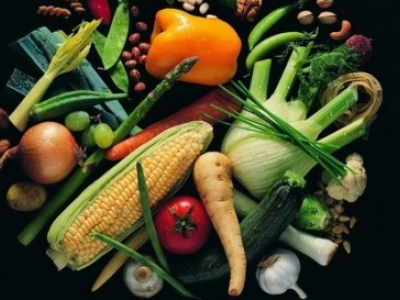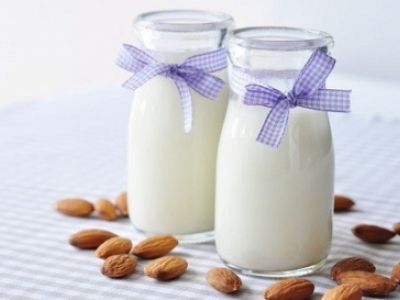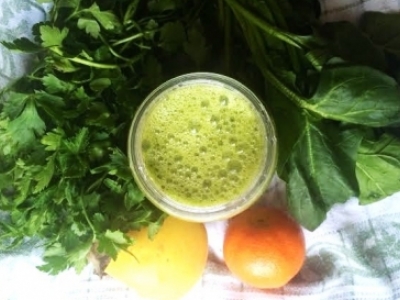Don't miss
Other articles
Little glycemic index! Size matters
The process of adipose tissue formation in the human body: It's all about insulin!
Green smoothie – a thick beverage, which consists of leafy greens, fruits and liquid base. At the first glance, it sounds a bit bizarre but once you try it, you will love it and would never come back to a junk food.
Green smoothie – a thick beverage, which consists of leafy greens, fruits and liquid base. At the first glance, it sounds a bit bizarre but once you try it, you will love it and would never come back to a junk food.
The principles of healthy eating and weight loss under Michel Montignac's method

Montignac’s method involves two phases: the first phase - the phase of weight loss (more strict one, during which you’ll have to get all your strength together), and the second phase - the phase of weight maintenance and healthy diet. You will not be able to avoid the first phase because if all your life you’ve been eating cakes, mayonnaise with mother’s besbarmak, then it will require really drastic measures to shake your body and, the most important thing, to adjust the process. You may ask: what process? - The process of adequate insulin secretion, of course.
So, in the first phase, we completely forgo the products with a high glycemic index (50 and above) and begin to vigorously seek healthier alternatives.
In addition, this phase involves the separation of meals into BU (protein and carbohydrate) and BL (protein and lipid). Initially, it will be difficult to understand the meaning of these mysterious letters, but eventually you will be able to easily determine what you are and what you are not allowed to eat something with.
| Type of Healthy Eating | PL (protein-lipid) | PC (protein-carbohydrate) |
| Allowed | • Protein (chicken breast, lean beef, minced beef and chicken, defatted horse meat, all kinds of fish and seafood) • Lipids (fats and oils, cheeses, fat milk) • Carbohydrates with glycemic index of 35 (low) |
• Protein (chicken breast, lean beef, minced beef and chicken, defatted horse meat, all kinds of fish and seafood) • Carbohydrates with glycemic index of 35 (low) • Carbohydrates with glycemic index of 35 to 50 (average) • Only polyunsaturated fats (no more than 1.5 per cent) - omega-3 and omega-6 These are linseed oil, safflower oil, grapeseed oil |
| Not Allowed | Carbohydrates with GI above 35 (middle and high) | The use of any fat, except polyunsaturated ones, is not allowed |
| Examples | • Beef stew in seed oil with vegetables (onions, peppers, tomatoes, eggplant and mushrooms) • Chicken breast baked in the oven with cheese and grilled vegetables • Pea soup without potatoes and with lean beef meat • Salmon fried in vegetable oil with pea puree |
• Buckwheat with chicken breast, baked on grape seed oil + vegetable salad on grape seed oil • Italian pasta with chicken cutlets on grape seed oil • Oatmeal, bathed in milk with low fat cottage cheese |
The only exceptions in the protein-carbohydrate meal are polyunsaturated fatty acids. These include fish oil, safflower oil, linseed oil and grape seed oil. According to Montignac, these fats have such a complicated structure, that they cannot be deposited into fat. On the contrary, these oils are very useful, and even help to lose weight.
Linseed oil has little bitter taste, and can only be added in salads, as it can not be heated. Withal, grape seed oil has a neutral taste. Notably, it can be fried, and stewed, and you can add in a salad as well. Safflower oil is also very delicious. I tried it, and, therefore, I recommend it.
In the protein-lipid meal fats are allowed to eat, however, carbohydrates glycemic index of 35 to 50 are not. That is to say, you should have already cought on: we do not combine fats and carbohydrates with an average glycemic index in one meal.
For the protein-lipid meal you can eat protein in any form, with saturated fats (egg yolk, chocolate, and dairy products with 1.5% fat and more) and monounsaturated fats (olive oil, almonds, olives, cashews, pistachios).
Carbohydrates with a glycemic index of 35 are allowed to consume in any meal and even during snacks.
Important to realize, you need to wait for at least three hours between different meals. For example, if you had PL breakfast and PC lunch, then time period between them should be at least three hours. If the time interval between meals is too short and the food is not fully absorbed, then the fats, eaten for breakfast, can be deposited in the fat under the influence of carbohydrates, eatean for lunch.
Now let's find out how well you understood the topic. For example, I decided to make a mega-delicious omelet with onions and tomatoes for breakfast. I’m frying it the in sunflower oil. What meal is that? Let's figure it out:
- Egg protein - protein
- Egg yolk - saturated fat
- Onions, tomatoes - carbohydrates with GI below 35
Can I add an oatmeal to that? No. This because an oatmeal has an average glycemic index (45), and, thus, you cannot eat it in protein-lipid meal.
Now let's review the scenario. I decided to make the same omelet, but without egg yolks. I used a bit of grape seed oil while frying it. It is no more PL as there is no fat,except polyunsaturated one (grape seed oil).
Hence, I can add a carbohydrate with an average glycemic index (such as oatmeal or buckwheat) to that meal. Then, it will become a protein-lipid meal.
The task in to determine which meal is that.
- Fritters made of rye flour, fat-free milk and egg protein, fried in grape seed oil
- Buckwheat with mushrooms and onions, fried in butter grape seed
- Ground beef casserole with cheese and tomatoes
- Rye bread cooked on the water with smoked salmon
- Beef patties with cheese suluguni inside and Greek salad
- Stuffed cabbage with low-fat ground beef and brown rice
- Sushi with cucumber-tomato salad on grape seed oil
Briefly about the blogger:
Kseniya Shilina – is crazy about healthy dining and sport. “I love to cook, constantly being in search of healthy and delicious recipes. Gym is my second home. I help others to become more slim, healthy and beautiful”.

Other articles
Little glycemic index! Size matters
The process of adipose tissue formation in the human body: It's all about insulin!
Green smoothie – a thick beverage, which consists of leafy greens, fruits and liquid base. At the first glance, it sounds a bit bizarre but once you try it, you will love it and would never come back to a junk food.
Green smoothie – a thick beverage, which consists of leafy greens, fruits and liquid base. At the first glance, it sounds a bit bizarre but once you try it, you will love it and would never come back to a junk food.









